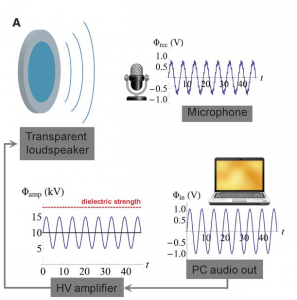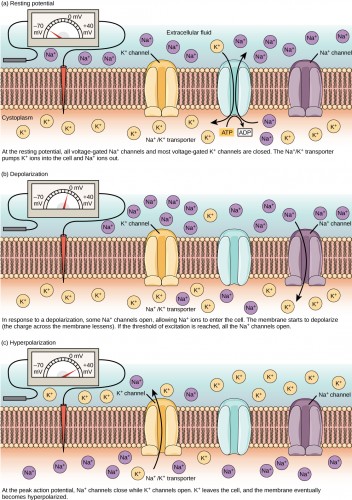
Imagine listening to 2 Chainz or Taylor Swift — but forget the iPod Speakers, try picturing Birthday Song blasting from a transparent, rubber disk.
In a study published in last month’s issue of Science, researchers at Harvard University demonstrated the ability of ionic conductors to enable high frequency and high-voltage devices.
Electrons in a circuit, also known as an electrical system, are the most familiar means for directing electrical currents. However, because the movement of any charged particle can create electrical currents, ions can also conduct electricity. But since ions are far larger than electrons — ions are the whole atom whereas electrons are merely one part of the atom — ionic materials have traditionally suffered from slower transmission. Moreover, ionic conductors often have difficulty withstanding high-voltages: The current can cause electrochemical reactions that burn the conductor and produce dangerous gases.
Yet, the ionic device at Harvard has overcome these two problems. Made up of a thin sheet of rubber placed between two layers of saltwater gel, the disk is the first of its kind. “By exploiting the rubber layer as an insulator, we’re able to control the voltage at the [areas] where the gel connects to the electrodes, so we don’t have to worry about unwanted chemical reactions,” commented co-lead author Jeong-Yun Sun.

Thus, high-voltage signals smoothly pass through the gel’s layers, causing the rubber to rapidly contract and vibrate. The device in turn produces sounds ranging from 20 hertz to 20 kilohertz. Such qualities indicate the device’s potential for high voltage tolerance and for high-speed vibration.
According to the study, electrical systems have traditionally been the only available stretchable, transparent conductors. But because electric conductors are made up of hard materials, i.e. metals, and their resistivity increases when stretched, their uses have been limited. This has made it extremely difficult to integrating electronics into the human body.
But it seems ionic conductors are now capable of meeting the demands of the human body, perhaps even better than their electronic counterparts. In addition to being transparent, ionic conductors are also extremely soft and flexible, allowing them to be stretched many times past their area without increasing resistivity. These qualities, Harvard researchers hope, may make ionic devices ideal candidates for new biomedical projects.

The theory does make sense — after all, our body’s entire nerve network is governed by ions that carry electrical current. “It’s rather odd that when we develop interfaces from electronics and the human body, we take metal, rather than what’s already in the body, which is gel,” remarked the study’s senior researcher, Dr. Zhigang Suo, in a podcast with Science.
Consequently, these new applications for ionic conductors may open up a world of possibility for innovative materials engineering. “The opportunity is unlimited for device designers. If you have a working device that uses electronic conductors, think about it, if you replace it with an ionic conductor, would it still work? Maybe you’ll create a whole new class of devices just by this change in perspective,” said Suo.
While advances such as artificial skin or muscle are still far from their debut, the Harvard team has provided a salient reminder about science: The frontier just keeps on moving forward.
